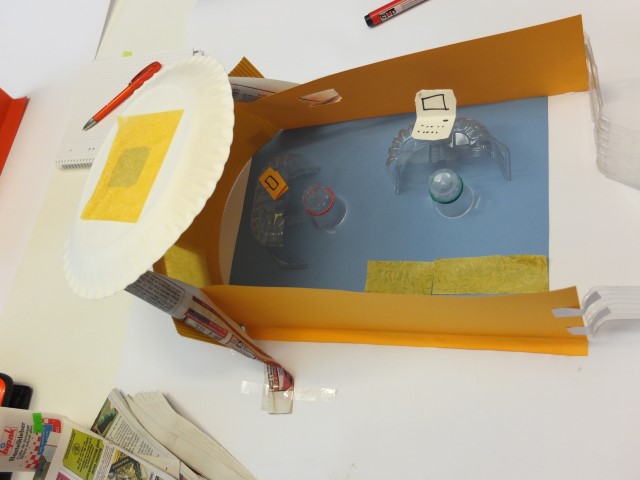People love to talk about where they work. Over 200, 000 years we’ve gone from running across the African savannah to staring at a computer monitor in a white, airless box.
This lesson is about….the office!
For those with absolutely no time the entire lesson can be downloaded here. If you use it, drop me a line and say thanks.
If it bombs then…..well, sorry.
Tell me how to improve it.
[NO IMAGE]
Background
Aimed at B1 to C1 Business English learners, in this lesson learners design and make the ‘perfect’ office space.
I was prompted to create this lesson by reading a comment by Lindsay Clandfield on Task Based Learning:
One danger of task-based approaches is that focus on meaning could come at the expense of focus on form. Learners become quite fluent, but their utterances are not often accurate. In addition, they develop strategies to complete the tasks quite quickly, cutting corners in their language use and form. (my italics)
I agree with Lindsay in that learners often find ways ‘around’ tasks and take the line of least resistance. However, I think that with careful planning, these problems can be designed out.
So, I wanted learners to design the ‘perfect’ office space as a task. But I knew that they would probably get started and scribble something down on paper quickly just to finish the task, and this wouldn’t involve much higher order thinking or language use. So I started with the idea of a ‘code’.
All maps have codes. If we can get learners to create a ‘code’ before they start the task of designing something – then this will force them to think more about the range of objects they can include and how to represent them visually.
And it worked!
By dividing the task into parts that can’t be ‘short-circuited’, including a stage where learners can criticise each others’ designs, I think that the end result was better.
Their designs worked better conceptually, visually and linguistically, and they had more opportunities to use English.
The Lesson
The lesson starts off with a clip from ‘Office Space’, one of my favourite comedies.
The film features ‘Rachel from Friends’ as a badge-wearing waitress (“37 pieces of flair”), a running stapler gag and the total destruction of an office photocopier. What’s not to like?
Learners describe what happens in the video and what objects they can see (e.g. cubicles, files, computer monitors, etc).
We then discuss some statistics on ‘sick building syndrome’ and the learners get to talk about their office spaces – what they like or don’t like.
Then the learners in groups design and make their own ‘perfect’ office space out of scrap materials, paper, cardboard, drinking straws and present their designs to each other.
Here are some of my learner’s finished designs:
Post-task you could ask the learners to research ‘sick buildings’ or office spaces that have been transformed into healthy buildings, or any other aspect of the topic that they find interesting.
The whole lesson plan is here.
Conclusion
What’s the linguistic aim here? Ok, I hear you. There’s no explicit grammar or vocabulary focus to this lesson, though the teacher could do this.
Personally, I use this kind of lesson (tinkering, making things) at the start of a course. This gives a signal to the learners that:
– your lessons are based on meaningful tasks (not on coursebook exercises)
– your lessons are based on real-life experiences
– your lessons are engaging
It’s also a great way of building trust and teamwork in a group that doesn’t know each other very well. For this reason the lesson was included in the first lesson of syllabus 3.
If any teachers use this lesson, drop me a line and tell me how it went!
paul



One thought on “Office Space”